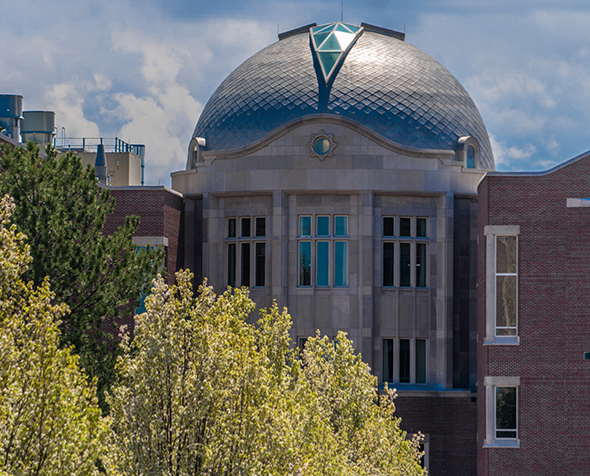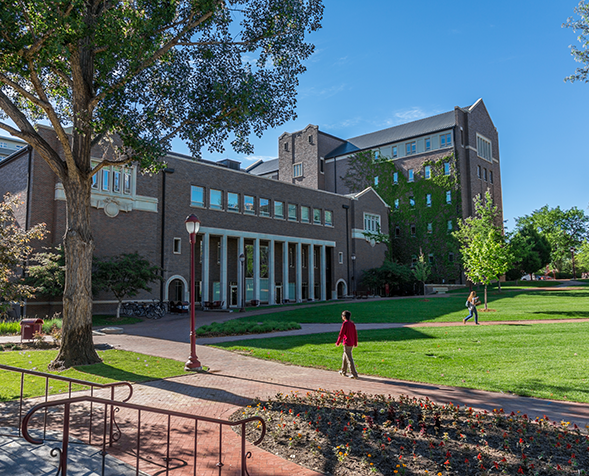Researcher Uses Engineering Methods to Reveal Promising Pancreatic Cancer Treatment
A novel amino acid treatment shows promise as an effective, low-cost and side effect-free treatment for one of the deadliest forms of cancer.

Pancreatic cancer is a dreaded diagnosis, killing approximately 50,000 people in the U.S. every year, according to the National Cancer Institute. It is challenging to detect, resulting in patients being diagnosed when the disease has reached an advanced stage, when it is also harder to treat.
What’s more, two common tools for treating a variety of cancers—radiation and chemotherapy—can take a heavy toll on patients, with significant side effects and high costs, and they are often limited in their effect on pancreatic cancer.
In the BioSun Lab at the Ritchie School of Engineering and Computer Science, Dali Sun, assistant professor of electrical and computer engineering, is taking on the twofold challenge, utilizing discoveries made while developing novel detection methods to uncover new, side effect-free amino acid treatment that shows promise as an additional tool to treat pancreatic cancer.
“We found the [pancreatic] tumor cells have several different features that can be detected by engineering methods—and, based on those features, we designed treatment,” Sun says. Using a spectrometer developed at BioSun labs, Sun investigated the differences between cancer and non-cancer cells, and which led to exploring the types of molecules that each expels. “If it's pumping out something that we can find in the secretion, but not in the cell, that means the tumor cells do not like those kinds of molecules,” he says. “They want to pump those molecules out. That inspired us to use them as a stressor.”
Sun and his fellow researchers found that histidine and isoleucine, two amino acids which humans typically acquire through their diet, were being expelled by pancreatic tumor cells. Introducing a mixture of those amino acids proved effective in stressing the cells to the point of cell death—inhibiting tumor growth—both in vivo and in vitro.
While the study found that chemotherapy was faster and killed tumor cells more effectively than the amino acid treatment, it also harms healthy, non-cancer cells, which can lead to significant side effects that impact patients’ quality of life and health outcomes. The amino acid treatment, on the other hand, demonstrated considerably higher selectivity, indicating that the novel treatment would carry fewer and less severe—if any—side effects.
Additionally, the amino acid treatment would be far cheaper than existing therapies, which can cost patients hundreds or thousands of dollars per dose. “These are easy, simple molecules,” Sun says.
Though they show promise, amino acids likely will not fully replace existing treatments, Sun says, but rather serve as an alternative or additional option to treat pancreatic cancer. “Combined with chemotherapy, it can increase the survival rate,” he says. “It can be used as a combination therapy for the patient with the current chemotherapy, but the amino acids themselves can also inhibit the tumor growth.” In the study, combining chemotherapy and the amino acid treatment was more effective in reducing tumor growth than either treatment on its own.
The discoveries have unveiled new ways to target pancreatic cancer cells. “We’re currently working on how to use our amino acid treatment for preventing progression of a tumor and the prevention of metastasis,” he says. And according to Sun, who has a background in electrical engineering, computer science and bioengineering, an interdisciplinary approach is more important than ever.
“Conventionally, we do not use engineering methods to discover cancer treatments. We’re more likely to use biochemistry or traditional ways of doing drug discovery,” Sun says. “But by involving more engineers, with different perspectives and different background knowledge, cancer may be conquered by different methods. Multidisciplinary research is more likely to bring a new approach for new therapies.”










